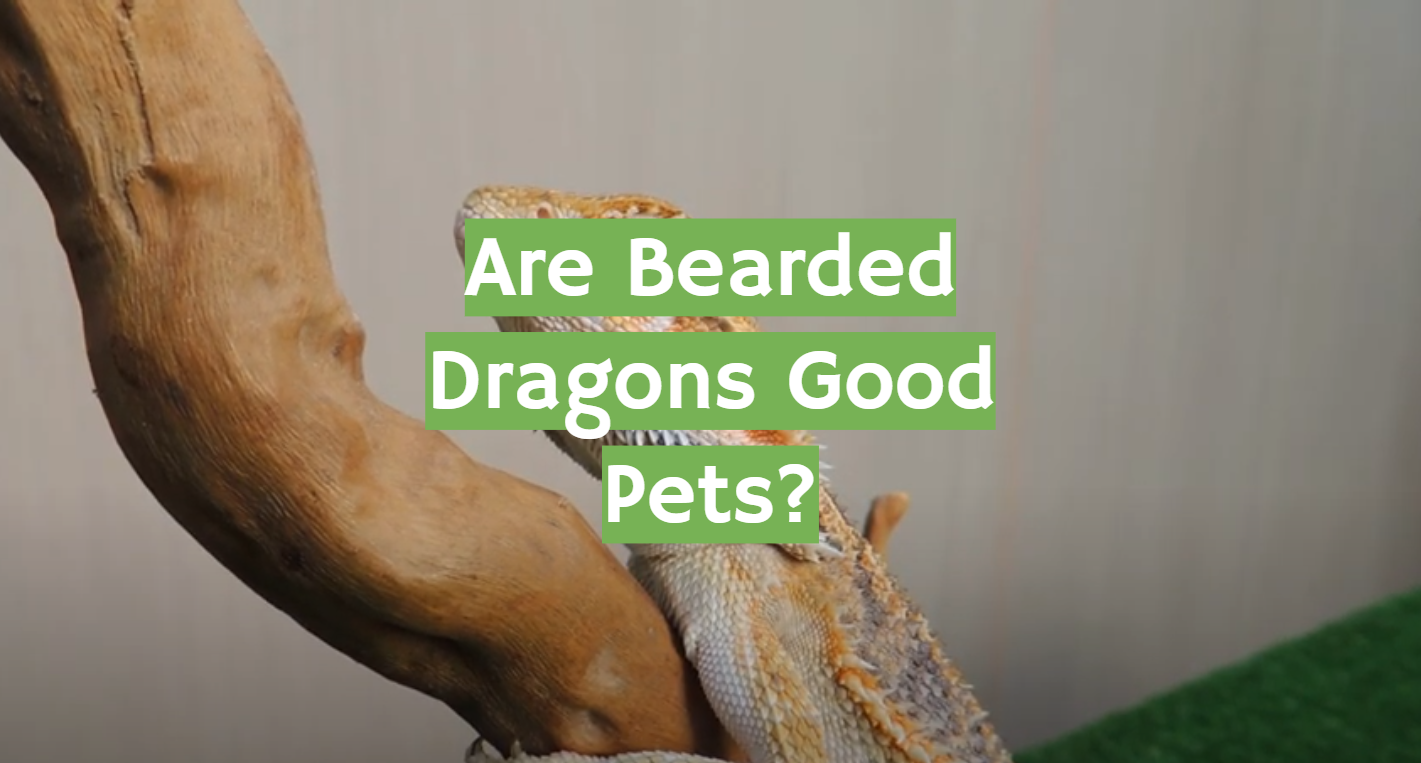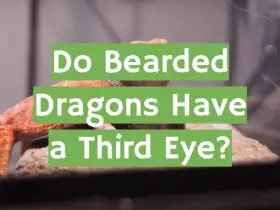The bearded agama has more than 350 species and belongs to the lizard family. These include dragons, water agama, round-headed lizards, and ruffled lizards. These reptiles have an exotic appearance and interesting habits, therefore, it is gaining popularity in modern society to have such animals as pets.
These reptiles live in Australia. Each species has its special differences, both inhabit and in appearance. For example, a lizard “opens” the collar when it is very frightening. It is bright red, which scares off the attacker. After that, she does not join the battle but hides on her hind legs in the shelter. Once she feels safe, her collar folds in, and she continues to eat or sunbathe.
Another type of these lizards is dragons. In dragons, the ribs are connected by skin folds. If you look closely, it looks like wings. These reptiles use their pseudo-wings to support their bodies in free flight. Unfortunately, they do not fulfill the full function of wings. But this is enough for the lizards.
Crested lizards have massive, large, and frequent spines that run the length of their tail.
All of these species are found in the arid regions of Australia. People have learned to create appropriate natural conditions in captivity, and now these types of lizards are propagated and sold as pets.
As for the bearded dragon, he got this name due to his more or less developed beard, which appears along with thorns. This is most clearly seen in males who have reached puberty.
The bearded agama is a medium-sized lizard. She has a slightly flattened body, a triangular head, wide. This part of the body is covered with sharp and prickly scales. The same thorny spines can be found on the sides between the fore and hind legs. If the animal senses that he is threatened by other animals, then his throat will become pondered, sharp spikes will protrude and a beard will form on the neck. Its color can range from dark gray to black. Typically, the color of the beard depends on the degree of arousal of the reptile. If the danger is not so great, the color will be dimmer, and vice versa, if the bearded dragon senses a greater danger, the color of the beard will be bright and frightening. The color of an animal depends entirely on its mood.
Rocky areas with sparse vegetation are the habitat of the bearded agama in the eastern states of Australia. It is these conditions that must be created for these reptiles if you nevertheless decide on such a pet. The bearded agama is a thermophilic daytime animal.
Bearded dragons as pets
Popular as pets, bearded dragons or agamas have become popular pets and have appeared in many families. These lizards are of moderate size and native to Australia. Generally, these reptiles are considered good pets. But even novice agama owners should know and understand that they have rather complex ecological and nutritional requirements. That is why special equipment and a sufficient amount of time are needed to care for bearded agamas. However, these representatives of the fauna are quite social. These animals are easy to tame. They are interesting to watch as they exhibit a range of fascinating behaviors.
Characteristics of the bearded agama
On the Internet and literature, you can find several names for this amazing pet. This is a bearded dragon, bearded agamas, and pogona vitticeps. Over the years, the agama reaches a size of 40 to 60 centimeters in length. The lifespan of an animal as a whole is 6-10 years, but some individuals live up to 20 years
About bearded agamas
These lizards are native (endemic) native to Australia. They love warmth and sunshine. Accordingly, the most important thing in keeping agamas is a spacious terrarium with the right temperatures and a place for heating and ultraviolet irradiation.
How they look like
They are rough to the touch, their thorns are not sharp at rest, but if the agama is frightened, then it strains the muscles, and the thorns become rather unpleasant. You can even prick your fingers this way.
In general, these lizards easily make contact with people and let them play with themselves. They are peaceful and sociable. If you organize their life and food correctly, then they can live in your family for up to 20-25 years. The appearance of these animals makes them similar to the dragons we know from cartoons and fairy tales. That is why they got their name – the bearded dragon.
What is their nutrition?
Next, let’s talk about nutrition, in nature, everything is useful for agamas that got into their mouths, so they feed on: small lizards, chicks, proportionate insects (including scorpions), and vegetation. Moreover, the older the bearded agama becomes, the more vegetation it consumes. This is very important since when kept at home, you have to regulate the diet of bearded agamas and monitor how much protein and fat they consume after reaching the age of one and a half years.
The omnivorous agamas are very convenient for keeping them in captivity. In the summer, you can feed them abundantly with dandelion, clover, dandelion, and mustard greens. It is not only tasty but also very, very healthy due to the vitamins contained in greens.
Of the protein food, agamas prefer crickets, cockroaches, and meal worms. Therefore, for the agamas, you also need to have a colony of Argentine cockroaches and meal worms at home, and in the freezer, there is always about a kilogram of frozen crickets “for a rainy day”.
In the diet of bearded dragons, you need to use not only animal food but also plant food. The amount of feed is regulated depending on the age of the animal. To feed reptiles, you need to equip a special place in the terrarium, or even a separate terrarium. Place a thief with a high side there. In the pet store, you will find a wide selection of these feeders, some can be decorated with branches, stones, and logs. The main thing is that your agama eats with pleasure from such dishes. In addition to a correct and balanced feed, one should not forget about mineral supplements. The bearded dragon must receive minerals, calcium, vitamin D throughout its life. Healthy bearded agamas never have problems with an appetite!
Bearded dragons and their behavior
The undoubted advantages of keeping bearded dragons as pets are their docile nature, friendliness, interesting habits, and unusual appearance.
Bearded agamas are very intelligent lizards, with good eyesight and excellent reflexes. Therefore, their behavior is very interesting. Scientists conducted experiments on bearded agamas and proved that they are capable of learning. And by observing them every day at home, you, like no one else, can learn better about the mental abilities of these lizards. Agamas are monkeys in the reptile world. They are interested in everything, from the owner to the objects that they find while walking around the room. Therefore, no small and bright details should ever be left in your house. They will inevitably be tasted and possibly even eaten.
Bearded agamas are also very fond of guests because guests are new objects to explore.
Even though this species of agama lives in rather arid regions of Australia, reminiscent of the African savannah, they love to swim. Do not deny them this pleasure and regularly carry out water procedures.
Bearded dragons and the sun
But most of all, agamas love the sun. Therefore, in the summer you can sunbathe them on the windowsill. In the sun, reptiles can spend time from 9 am to 1 pm, and sometimes more.
About the same, agamas gather in their homeland on large logs or flat stones. And this feature made the agamas develop their system of gestures for communication. Bearded agamas love to communicate. They have head nods and front leg swings. Usually, males nod. They do this either quickly and aggressively, showing who is the master on this stone, or gently, hinting to the female about the upcoming caresses. But females are very fond of flirting – slowly waving their paws in the face of their suitors. It is a great pleasure to observe the communication of bearded agamas!
Other animals and bearded dragons
Bearded agamas are very lenient towards other animals if the animal is larger than them in size (they will simply eat the smaller one). Most likely, when they meet other animals, they will pass by. But if the animal (dog or cat) starts to pester, then the bearded dragon uses what they call the beard – inflate the beard and spread the thorns, thereby making it clear that she is not in the mood. Therefore, you should not believe the information that if you want to have a bearded agama at home, you need to get rid of other animals. This is not true, bearded dragons will be able to get along with a dog and a cat in the same room.
The place to live
Bearded Agamas are not kept in pairs. They need a group with one male and at least two females or live alone. The male will simply torture one female with his courtship. To keep the agama, you need a horizontal terrarium with the reproduction of the landscape of the habitat, with good ventilation. The location of the door for feeding and cleaning is also important. It should be located in the front.
The equipment for keeping the reptiles is very simple: the terrarium is at least 80 pounds long, 40 wide, and 40 high. You also need two lamps – UVA 10 percent or UVD, any company, and an incandescent lamp 40 or 60 watts. You need to have 45 degrees of heat at the very top of the driftwood or heating shelf. Agamas love to warm up very much, and the temperature in a cold corner should reach 26-28. An adult needs a large reservoir, at least 100-120 liters, otherwise, the pet will feel cramped and will not be able to develop normally. That’s all the equipment you need to keep a high-quality bearded dragon.
Some nuances about the place to live
Ventilation. The terrarium should have good quality and regular ventilation. Don’t forget this. If there is humid and musty air, then such content can lead to the development of skin diseases, the appearance of fungal infections of the respiratory system and skin.
Home decor. Pet owners often decorate the terrarium and make it aesthetically pleasing to the viewer. When decorating a reptile habitat, you first need to think about the comfort of a bearded dragon. The safest option would be to decorate the terrarium with natural snags, branches, stones. Do not use artificial plants. Remember that the bearded dragon loves to taste everything with its tongue and can bite off part of the plastic plant and swallow it. Because of this, problems with the dragon’s digestion can occur and even lead to the death of the pet. If you like plants, you can plant cacti or agaves in your terrarium. But even in this case, you must be prepared for the fact that over time only a bare stem will remain on this plant.
Primer. To prevent the reptile’s paws from sliding on the glass floor, catching colds, and freezing, it is necessary to select a special substrate. It is placed on the bottom of the terrarium and this allows the reptiles to feel comfortable. This will make it much easier to clean the terrarium from the substrate. The main factors in the selection of a primer will be non-toxicity, flowability, and the ability to absorb moisture.
Terrarium lighting. One of the most important factors in keeping a bearded dragon will be proper lighting, heat supply, and ultraviolet light in the terrarium.
Ultraviolet. With a lack of ultraviolet light, a bearded dragon can begin to suffer from various diseases. To avoid this, buy any UV lamp. Now you can find various companies, designs, there are many varieties of imported UV lamps of various wattages for reptiles. Do not use UV lamps that people use. This light is not suitable for reptiles. Install the lamp so that ultraviolet light does not shine through the glass. But got directly into the terrarium.
Humidity. The bearded dragon lives in the desert. Despite this, the reptiles need water. Be sure to install a drinker in the terrarium. Change the water every day because some individuals prefer to use the cup as a toilet.
Temperature. Agama loves to bask in the sun. Set the lamp to monitor body temperature. There should also be a cold corner in the terrarium. Bearded dragons warm themselves for about 9-12 hours, the rest of the time they spend in a cold corner or a shelter.
Final words
If you want to get yourself an exceptional and unique pet, be sure to check out this article. These strange animals can make great pets, but we recommend that you familiarize yourself with their nature and habits in advance.
Bearded agamas naturally easily adapt to human society. Most of them, when trying to pick them up, will just sit still. Some will try to run away, and in a very rare case, they will bite an outstretched hand. Undoubtedly, each agama has its character, however, for the most part, they are extremely peaceful and sociable.
Of course, as pets, they are different from cats and dogs. The large cerebral hemispheres of reptiles are much less developed than that of mammals, so you cannot expect that you will be able to train an agama like a dog. On the other hand, the lizard won’t scratch your furniture and neighbors won’t complain about the noise. The pleasure you get from watching and interacting with these amazing creatures really can’t be compared to anything.
It is believed that buying a bearded dragon is best in a family with children. They are good pets and do not require heavy maintenance. They are quite calm in their behavior, not aggressive, do not bite. These animals love to communicate with their owners, sit on their hands. The child will be able to make friends with a bearded dragon and play with him for pleasure and even take water procedures.
This is a very social lizard that knows its owner very well and communicates with him with pleasure. In content, they are not too whimsical, they are suitable even for beginners. Communicate, make friends and interact: your efforts will be noticed and appreciated. We hope that this article will be useful to you, you will follow all the recommendations for the care, maintenance, and feeding of the reptile.






Leave a Review